Here is what to see in Loznica Serbia. It so happened that I have come to Loznica from Kokin Brod, driving through thick fog and rain in Zlatibor, hoping it will stop after Uzice, but then sharp curves on Kadinjaca disappeared into the mist again. Driving along Drina river brought some relief, but it wasn’t until I reached Loznica that I felt like entering a bustling civilization. It wasn’t all green yet, but it surely blossomed!
FROM BELGRADE: about 140 km
FROM NIS: about 375 km
If you are driving from Belgrade, the easiest way to come would be to take the highway via Ruma or to go via Obrenovac and Sabac. Coming from Nis would mean to reach Belgrade first or to go through Kraljevo and Uzice, the first option being faster because of the highway towards the capital.

LOZNICA SERBIA
It is located beneath the Gucevo mountain, on the right bank of Drina river and is considered to be a cultural and tourism center of the Podrinje region. The municipality population is about 80,000 that live in 54 settlements. Loznica is situated at the altitude of 142 meters.
During the rule of ancient Romans this area was part of the Dalmatia province. The first settlement was called the station ’15 miles’ and the most important was the so-called Genzis. The name of the town was most likely derived from the word vine (loza in Serbian), given the fact that it was grown here ever since the 3rd century. Loznica was firstly mentioned in the King Milutin’s document when the nearby Tronosa monastery was erected in 1317. It became part of the Serbian state during the Milos Obrenovic rule, in 1833.
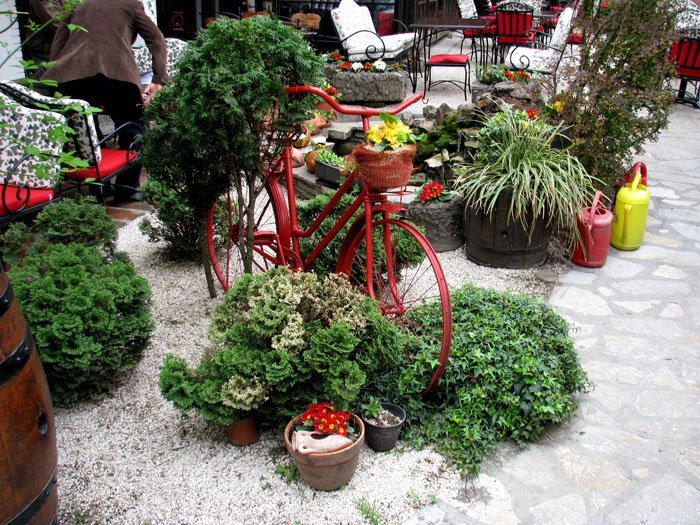
Once you come into town, you will be surprised by how busy it is. I had an opportunity to visit a few years ago, but due to lousy weather and the construction work that was in progress in the very center, the impression was not that good. This time though, trees just began to blossom, people were lured out by the sunny day while the traffic was pretty busy. Parks were full of people, it was hard to find a single parking lot (you pay by the hour or a daily fee), but when you get passed all that you actually walk out to admire charming façades and clean streets.
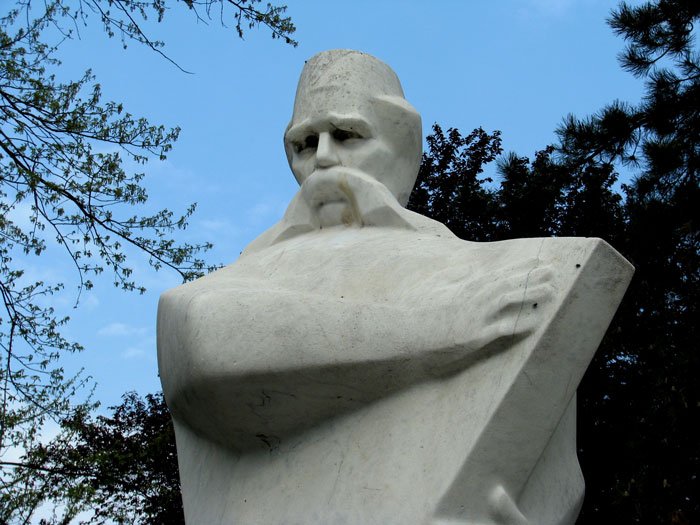
Mr. Zoran from Tourism Organization of Loznica was telling me how the town consisted of the Upper and Lower Port stations in the 19th century and how the Stira river that flows through the modern center, was once totally different. It now flows between the stone-built fronts, bringing a nice breeze (reminding us that Drina river is also nearby). Our walk began here, right next to the monument of Vuk Karadzic, an extremely important person who was born in the nearby village. The area was popular among the aristocracy once, traces of which can be seen nowadays in the surrounding architecture.
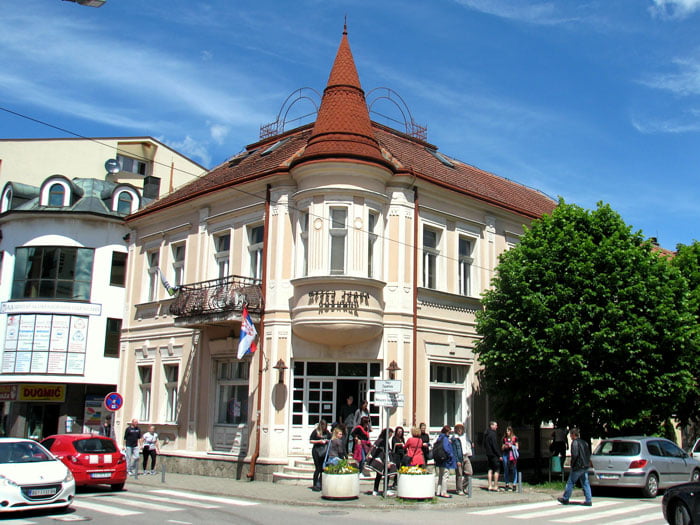
The Jadar Museum with its pink façade and a cone on the top should definitely be one of the stops. Opened in 1987, it houses a rich ethnology exhibition. It overlooks the vast park with Jovan Cvijic statue, another important Loznica gentleman. (He was born in 1865 and considered to be the Serbian geography founder. The town dedicated this park to him, a promenade and it is home to the Cvijic’s Days Festival in October.) Not far from here the recognizable orange building of ‘Vukov dom kulture’ (Vuk’s Culture Center) can be found. The land where it was built belonged to Staka Pejic from Lesnica village who donated it to the town (along with her War Orphan Center building in Banja Koviljaca). This is where the Cultural Center of Loznica is with the town’s theater, cinema, gallery and the Folk Dance Group Vuk Karadzic.
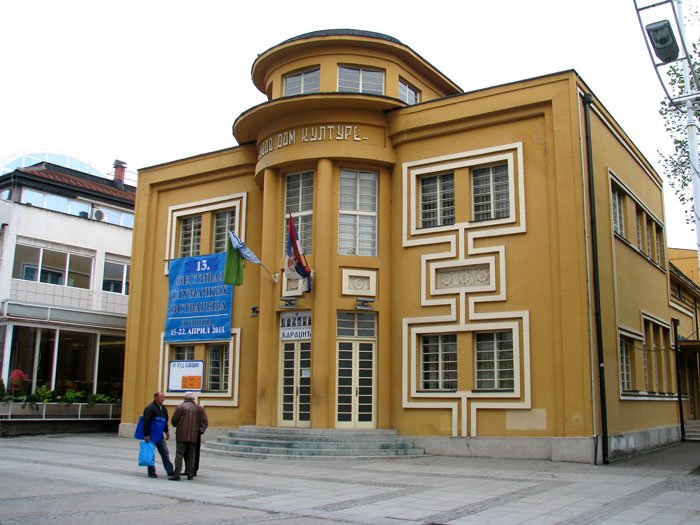
Up the Jovan Cvijic Promenade, there is the legacy of the renowned artist Mica Popovic, also from Loznica, with the gallery of his and works of his wife Vera Bozickovic. The legacy gallery is situated in one of the most representative buildings of the 19th century. Mica Popovic himself attended the opening ceremony in 1989. The festival of Mica’s and Vera’s Days takes place every June.
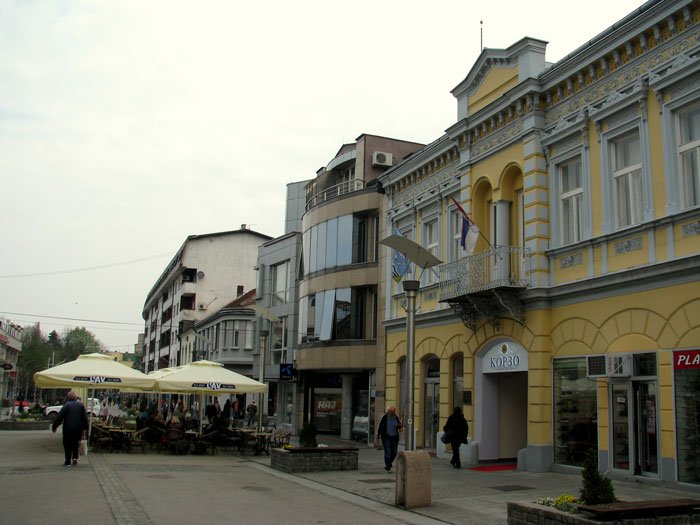
Along the pedestrian street, there are numerous café terraces, shops, while the TOL office is at its end. (Make sure to stop by for souvenirs with local motifs.) Another lovely building that houses the local school and the town’s church are on the hill on the right. The small square is home to Filip Visnjic statue by Drinka Pavlovic. Mr. Zoran tells me how the Virgin Mary Church is located at the very spot where the old fort stood, that this is where the famous Battle of Loznica took place in 1810 and thus where the military leader Anta Bogicevic is buried. But he also remembers how he played here as a boy, slipping into vast holes of tree trunks.
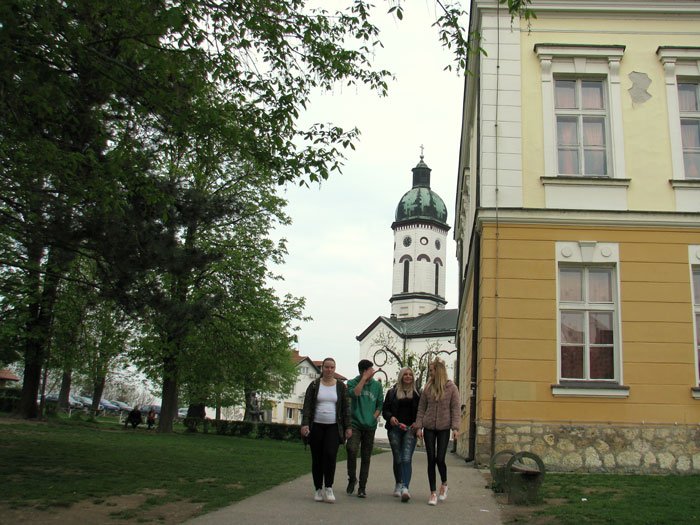
TRSIC SERBIA
This village is where Vuk Stefanovic Karadzic (1787-1864) was born, philologist and linguist, Serbian language major reformer. It is located 7 km from Loznica. This is the open-air museum with small Zeravija river flowing through. The Language Museum is to be found in this authentic village, along with the gallery, Guest House traditional premises, calligraphy workshop, Vuk’s Festival Museum, old cottages with traditional crafts, but his Memorial House as well. Trsic is the busiest during the Vukov sabor festival in September and the Djacki Vukov sabor in May, while it’s the favorite getaway for Loznica citizens during weekends.
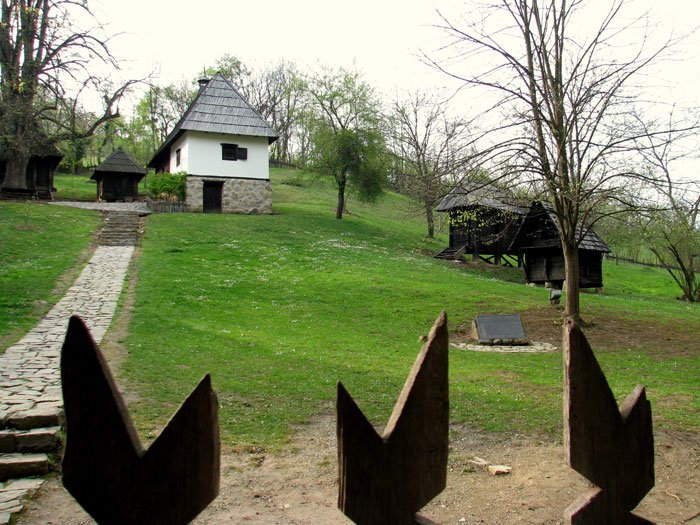
At the entrance of the Vuk’s Memorial House there is the inscription quoting him as saying that he was born and raised in Serbia and that that’s why he considers Serbia to be the most beautiful country in the world “with no better place than Trsic”. Mr. Zoran says the actual house was built in 1933 at the very spot the old house stood. It was decorated according to villagers’ testimonials. Marking the century of his death, the complex was rebuilt in 1964, while the special part of it was added in 1987 (200 years after Karadzic’s birth) for the festival purposes. It was thus far held in front of the Memorial House which is definitely a must-see on our list of what to see in Loznica Serbia.
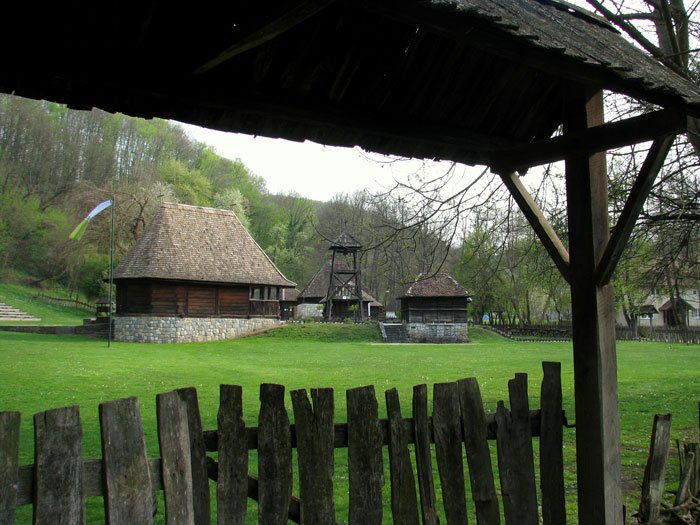
Rushing around to get as many photos as I can, I stopped at one of the traditional cottages served as a watermill once. They say that these wooden houses are originally brought from surrounding villages. We had lunch at the traditional restaurant with tasty homemade ‘orasnice’ cookies served with coffee. (Mr. Zoran even gave me a recipe, saying that “it never fails”.)
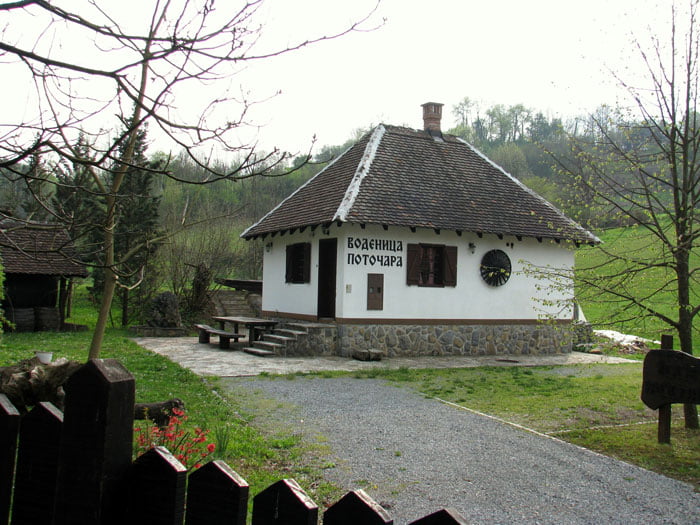
We went by the Educational Cultural Center Vuk Karadzic, opened in 2018 that welcomes excursions, conferences, educational workshops, art colonies. Its capacity is 40 rooms and 144 beds, and you will be able to see various works of art adorning its walls, donated by workshops’ participants. They take us to see modern conference halls with laptops, projectors, interactive boards etc. (I can’t help but wonder what Vuk would say – he who was trying to reform the language and literate people of his small country with the simplified alphabet – what he would say today about these interactive boards and internet that connects his village to the rest of the world!)
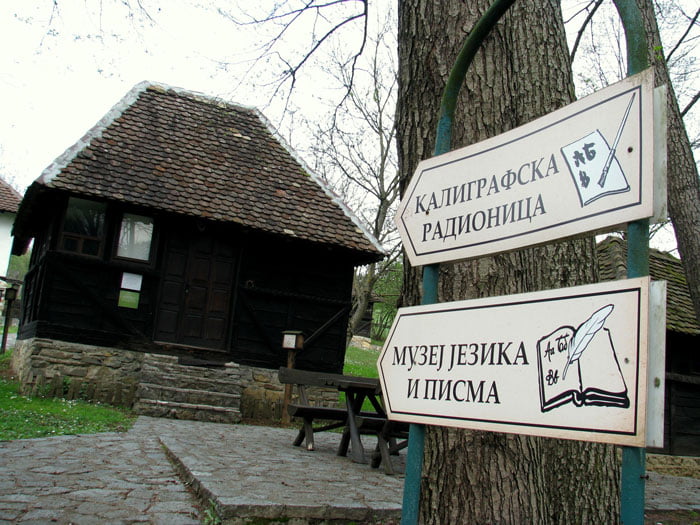
“You just have to be in awe”, Mr. Zoran says, “for this man from a small village and with damaged health, to become such a huge figure!” He reminds me that the language reform was not easy nor welcomed at the time, that Vuk married a German lady at the Catholic church which was pretty ‘rebellious’ back then. Today, Loznica proudly mentions Vuk’s name, saying that the town is thus better than others, “at least for a letter”.
We are taking off to another place to see, also connected to Karadzic.
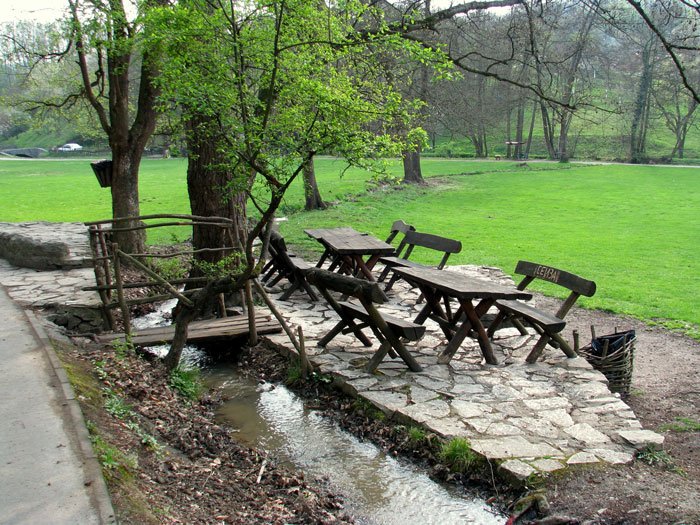
TRONOSA MONASTERY
Located 10 km from Trsic and 17 from Loznica, the monastery is the endowment of Serbian King Dragutin. His Hungarian wife Katarina (or Katelina) erected it in 1317. In the complex surroundings the interesting fountain is to be found dedicated to nine Jugovic brothers who fought the Kosovo Battle in 1389.
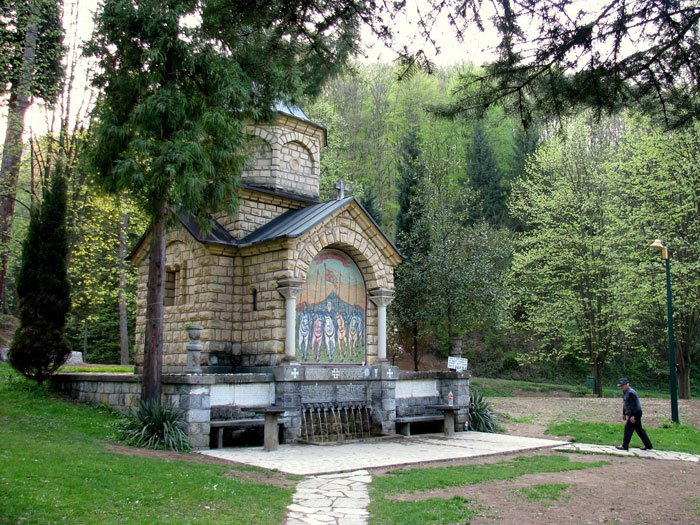
While driving towards the monastery, we talk about Vuk Karadzic and how he also went to school there. His father thought that Vuk was not going to learn anything, given the fact that children often spent time guarding monastery sheep. Our first stop was the famous fountain. Legend says that Jugovic brothers stopped by here on the way to Kosovo and stumbled upon the refreshing spring. The fountain was built later in their honor and decorated with the authentic mosaic. The water is running during day and is bottled during night for the purposes of the nearby bottled water company Tronosa.
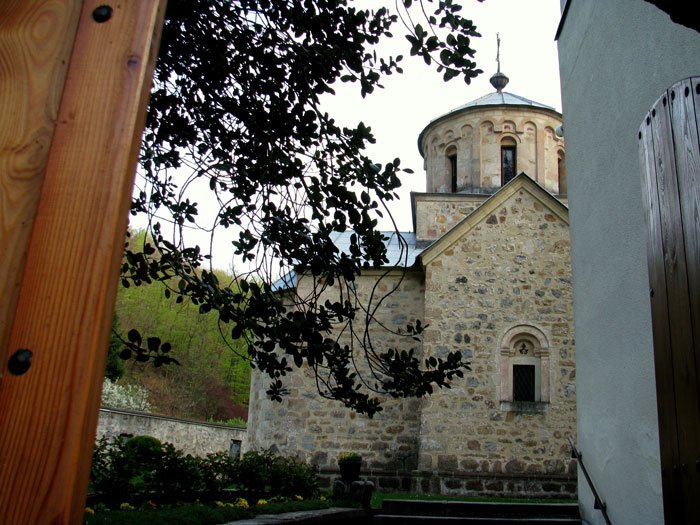
The monastery was destroyed after the Kosovo Battle and stayed in ruins until 1599. After being rebuilt, Turks burned it to the ground once again in the 19th century when Serbian ruler Milos Obrenovic rebuilt it for the second time. During the WWI this is where Serbian soldiers were helped and taken care of if wounded and its treasures were thus taken by Austrians to Vienna. Among others, the Tronosa Script which was one of the first Serbian written history books, they say.
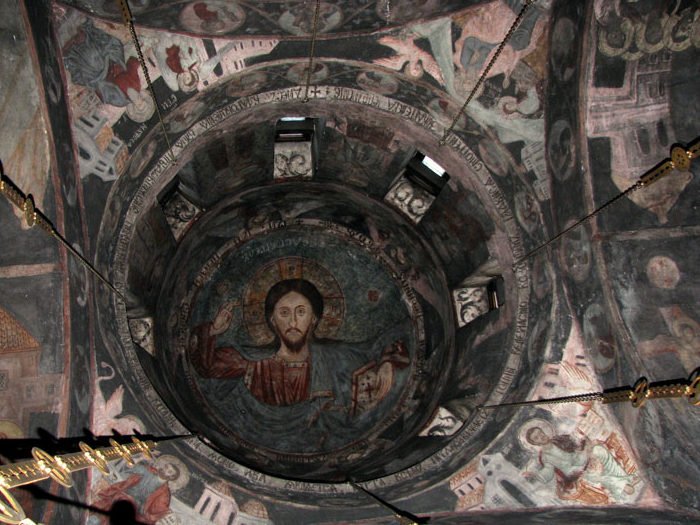
There is a special custom here to make the so-called ploughman’s candles. Every year before Easter people from surrounding villages are donating money to get the purest candle wax. Four days before Easter they make two candles and bring them to the Jugovic’s Fountain the next day and then to the monastery. They burn all year round, being lit for great holidays and if there are leftovers, they are added to next year’s candles. These candles are 1,5 meters tall and they weigh 50 kilograms each.
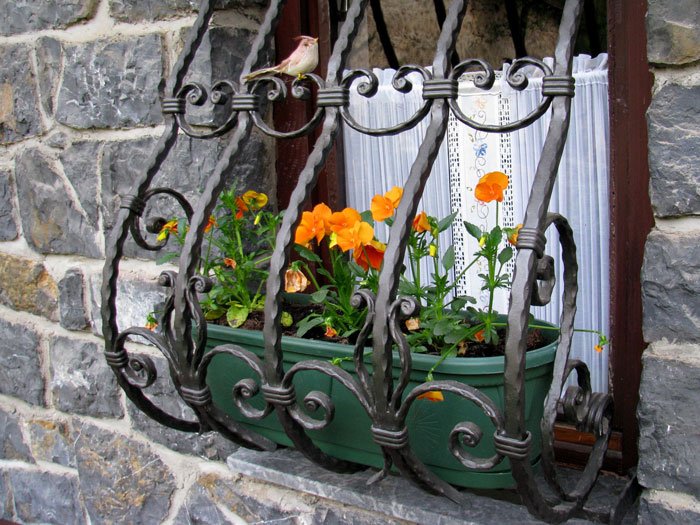
BANJA KOVILJACA
One of the oldest healing spas in Serbia. Its thermo-mineral water and peloid healing mud are good for rheumatic conditions, discus hernia, osteoporosis, but obesity, sterility and skin diseases as well. Special Rehabilitation Hospital includes a separate section for children, the first of its kind.
Banja Koviljaca park stretches over 40 hectares with Kur-salon being the prettiest building, opened in 1932 by King Aleksadar Karadjordjevic. Here you can find King Peter I sulfur bath, special mud bath and spa villas such as Herzegovina, Dalmatia, Bosnia, Koviljaca etc. Within the medical premises there is also a wellness center with pools, sauna, solarium, massage treatments and the king’s bath.
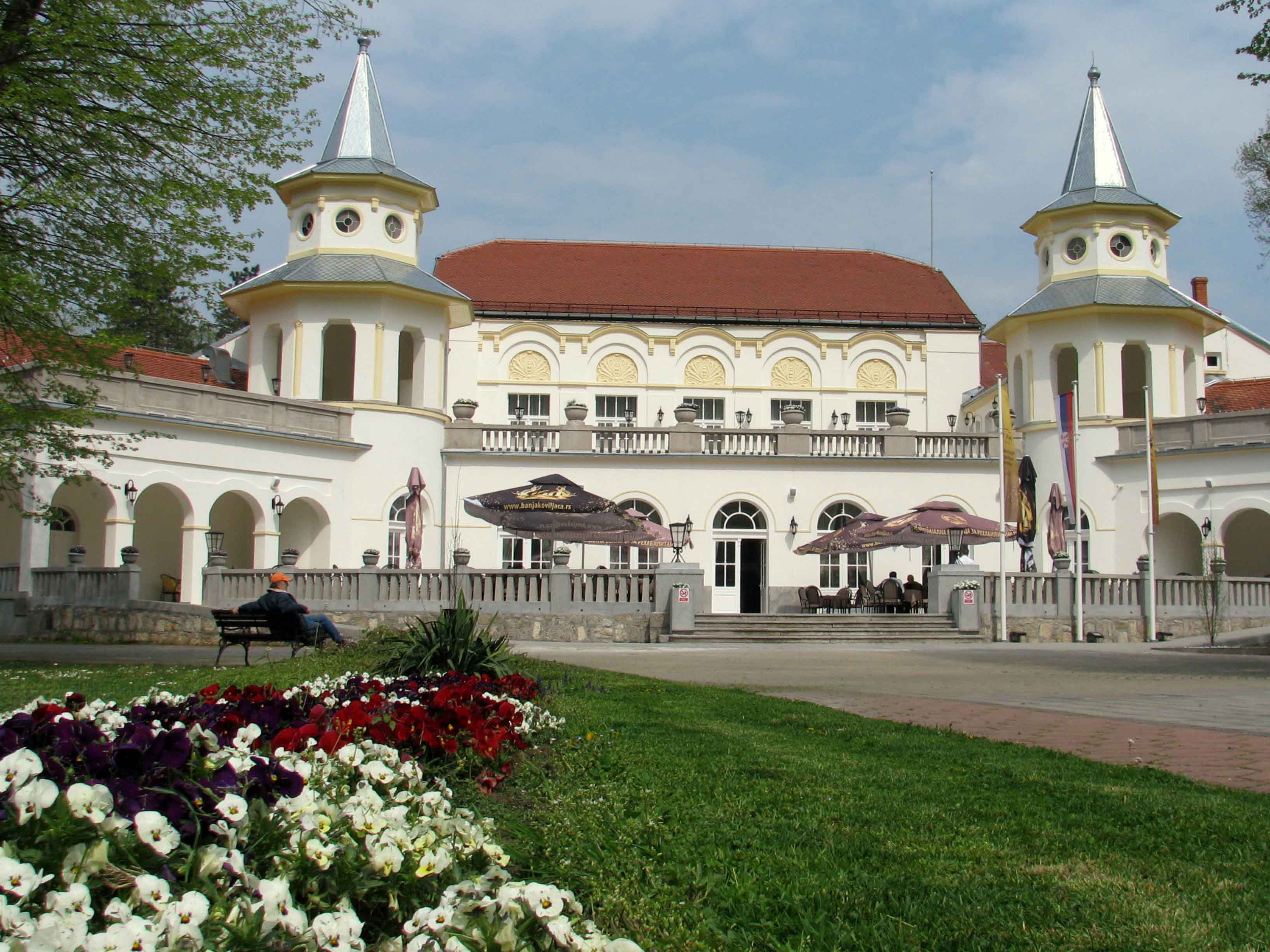
The first thing you notice here is the vast park with fountain in the middle, lots of flowers, trees and those charming buildings around. Kur-salon is restored and reopened this year. This is the place where king’s balls were held. The renowned casino was also here. It was built to be similar to the Kur-salon in Vienna and its name is derived from the Latin ‘kura’ meaning healing, health care, recovery. Kur-salon is one of the main things on our what to see in Loznica Serbia list.
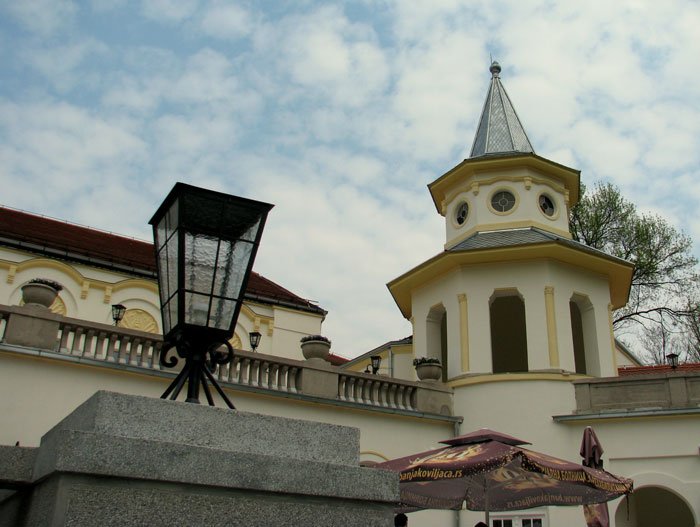
The spa was either named after a noble woman called Koviljka or after the ‘kovilje’ or fairy grass that was common in the area. There is still a charming story to be heard about how the healing spring is discovered. The story says that a wounded horse was left behind by a caravan. When people went back, they saw the same horse not only to be alive but properly healed due to lying in the nearby mud.
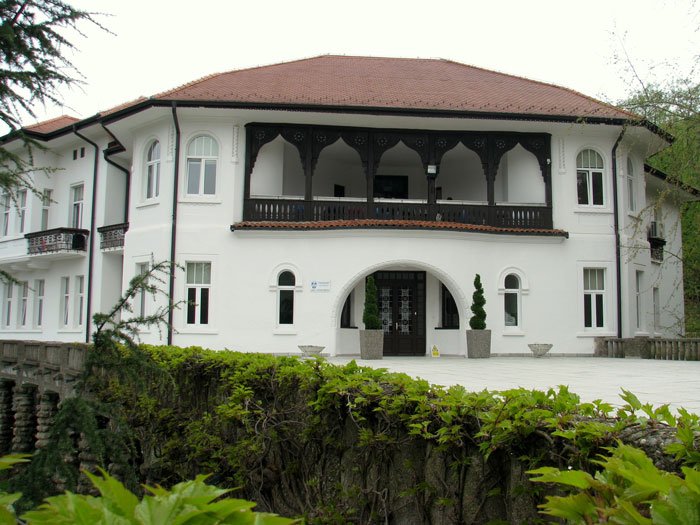
It is assumed that ancient Romans used the healing powers of the spring, given the fact that they often built thermal baths all around the Empire. Still, there are no actual evidence that these baths existed here. They say that it is possible that Drina river overflowed its banks once all the way to the mountain foothill. Thus, the healing spring might have been hidden and hard to use. Turks have begun to use the water in the 17th century, while Serbian king gave it to its people two centuries later. This is when spa’s glorious decades began. The old nickname of Smelly Spa (due to the sulfur water) was soon changed into the King’s Spa.
“And now, we will be off from those 142 meters of altitude in the city, via Banja Koviljaca, to 779 meters”, Mr. Zoran announces.
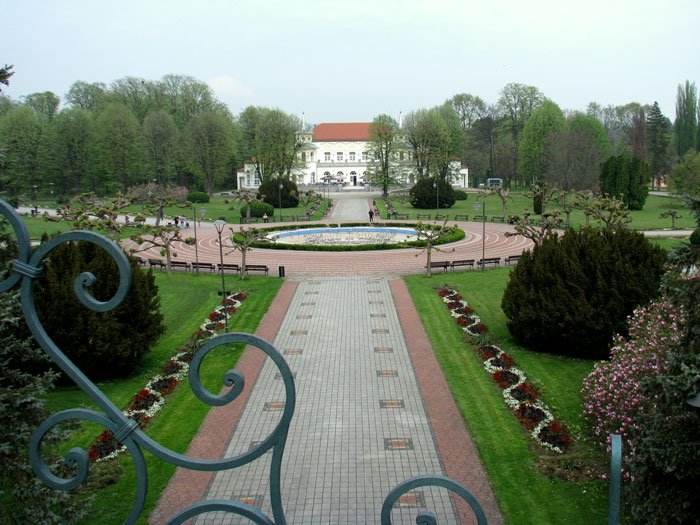
GUCEVO MOUNTAIN
The highest peak is ‘Crni vrh’ at 779 meters where the memorial monument was built dedicated to WWI soldiers. This is where the so-called ‘battle beneath the clouds’ took place in 1914 and where Serbian and Austrian soldiers were buried together. The monument was erected in 1929. The battle lasted for 55 days.
Besides its historical importance, Gucevo is also known for its ideal conditions for sports, recreation and excursions. It is attractive to mountaineers, cyclists, bikers, extreme sportsmen, paragliding.

The sole drive towards the highest point through the thick beech forest makes this a great place to be. When you reach the top, it is easy to understand why Gucevo is so popular for paragliding. Even though the light mist prevented us to make few perfect photos of that gorgeous view, the view itself was still breath-taking! The town emerges on the right with Drina curving around. Mr. Zoran showed me where our next stop was going to be, down there, next to the river. Time for a break!
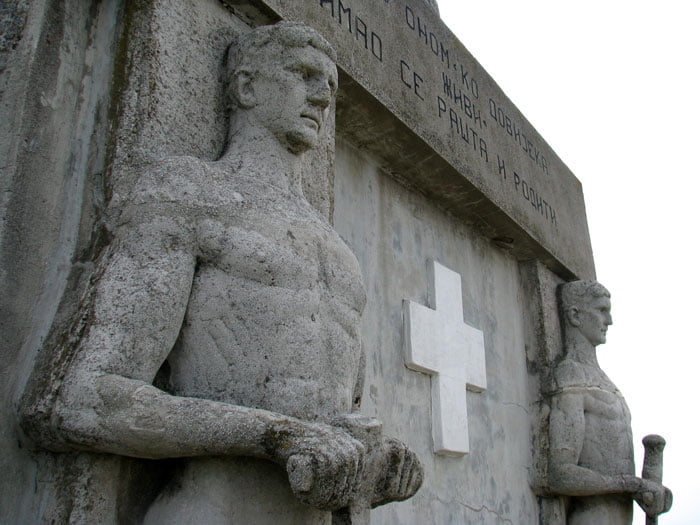
Ethno village ‘Suncana reka’ (‘sunny river’ in English) spreads over the space of 7 hectares with horses and other animals, small amusement park, museum area dedicated to Drina over centuries, traditional houses to rent, restaurant, sports field etc. (I even found a small cottage bearing my name, ‘Danijela’, for some reason!) This is where few famous Serbian series were filmed.
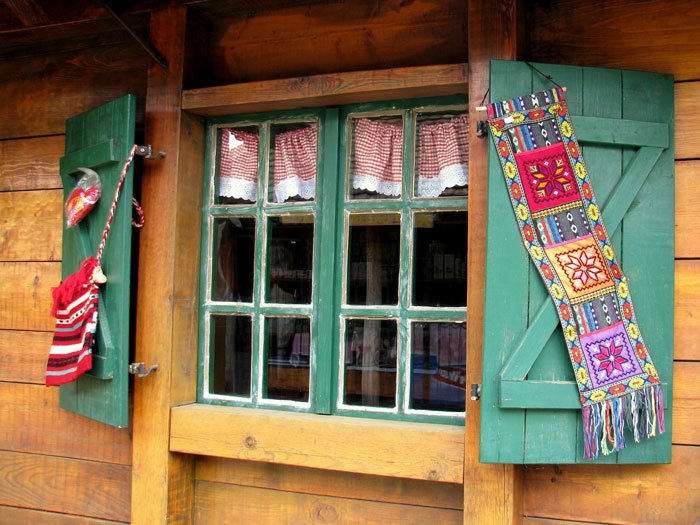
It looked like it would rain soon, so we had lunch inside. We were talking about the lack of time, since I didn’t get the chance to see the Cer mountain, Tekeris village, Badanja spa, Cokesin monastery, Budimlija, and it was still early for Drina as well, the season hasn’t even started yet. They say that the most popular beach is few kilometers long, near Banja Koviljaca, where several thousand people gather during summer…
So, the next time I come, I’ll be sitting outside, next to Drina. And I will bring that delicious cake I found here, the one with halva!
Next: How to get active on Tara Mountain
The full Weekend In Serbia section
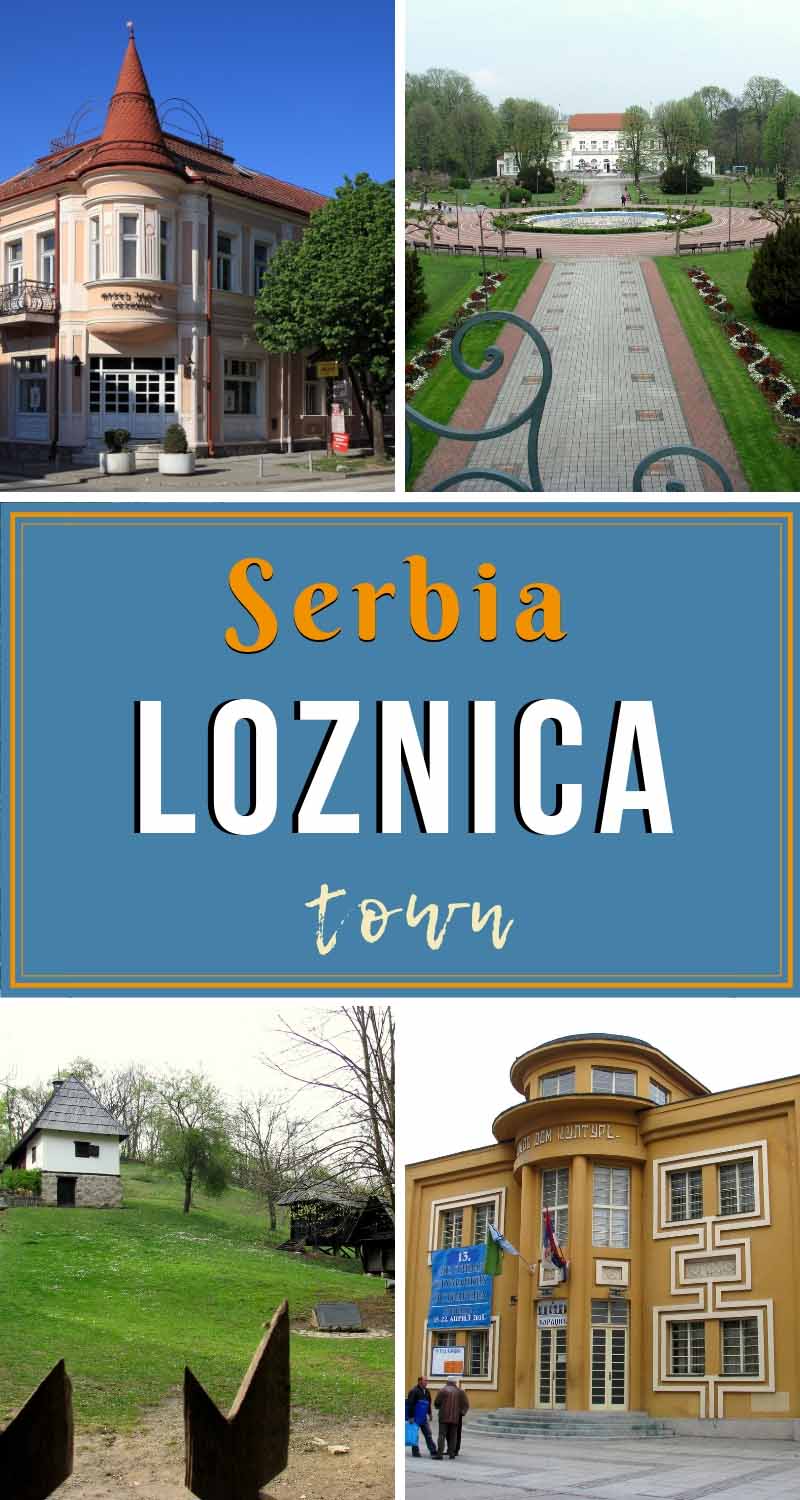

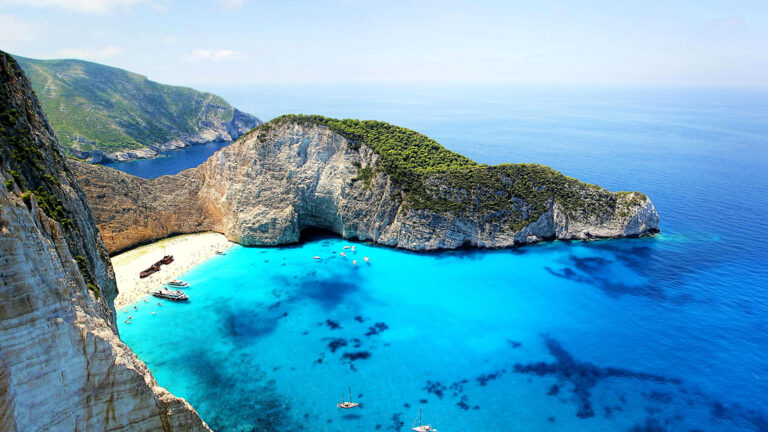
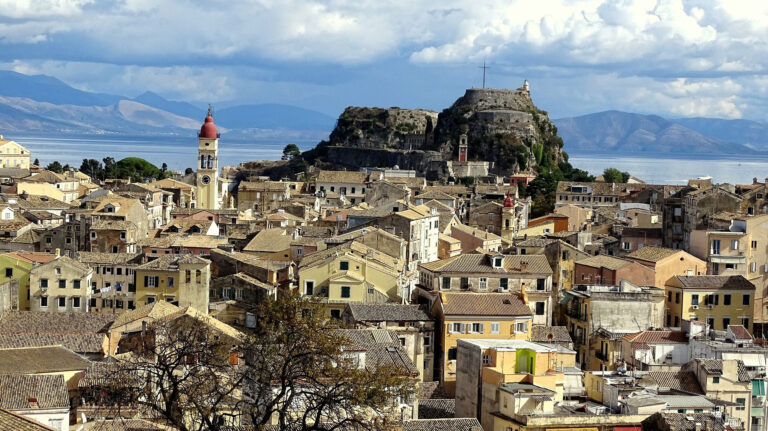
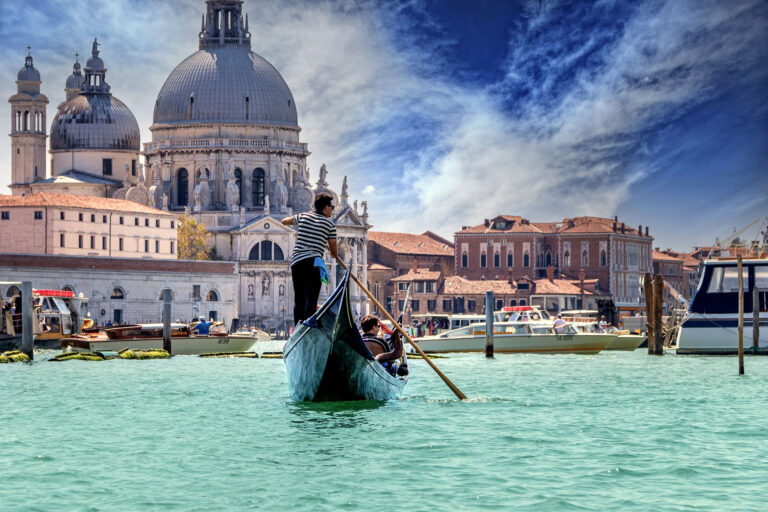
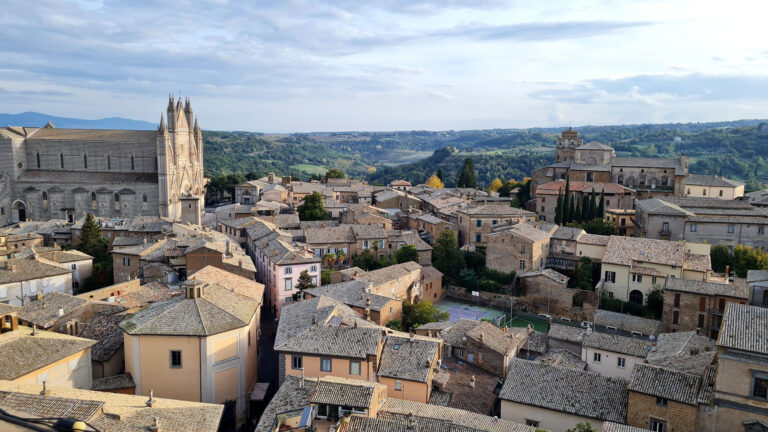
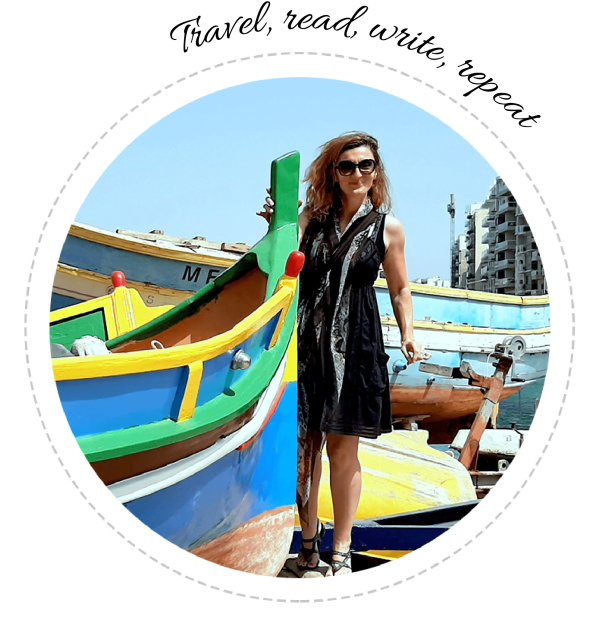


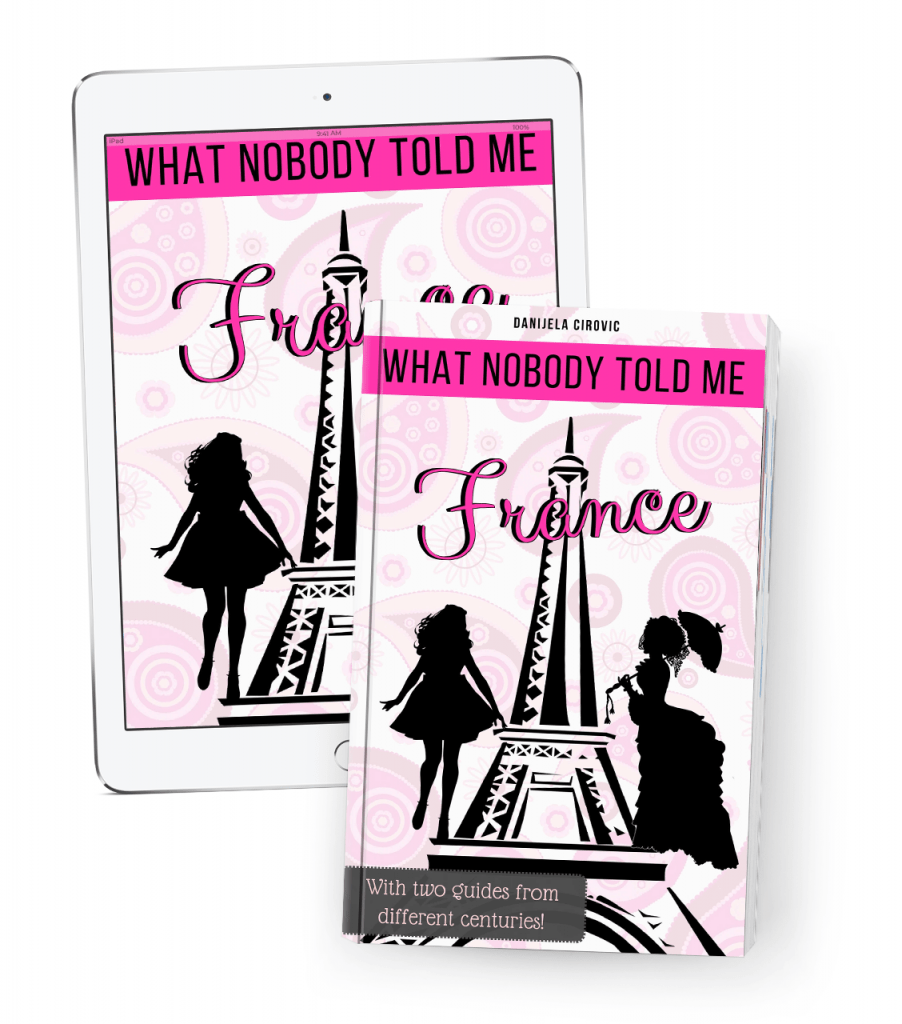
20 responses
I love the architecture here especially the types of homes and natural materials that are being used, lovely and the tour was spectacular. Thanks for taking me to a corner of this world I’ve never been to.
You probably refer to Trsic village. Yes, those are authentic old houses used in surrounding villages and gathered here afterwards for complex purposes.
Thank you, so glad you liked the post.
This is so funny. Although I am coming from neighbouring Croatia, this the first time I have heard of Loznica. In fact, while reading your post I was searching Google Maps to find out where exactly Loznica is. The town looks absolutely charming, picturesque and idyllic. The scenic countryside, traditional wooden cottages and the mill look so impressive!
Pozdrav iz Hrvatske
Oh, thank you so much for your interest. 🙂
I know the feeling when discovering a new place even though I think I’m familiar with the country. Even more so when it comes to neighboring countries, right!
So glad you like the post. 🙂
Lep pozdrav i od mene, iz Beograda. <3
I guess all the memorials and references to Vuk Karadzic show just how important language is. I like this small city and all the quaint buildings in the surrounding area.
Thank you. So true, Vuk Karadzic was a major figure for the language reform of the whole region. You can still hear people in Balkans saying their languages are ‘the easiest to read’. 🙂
I’ve never heard about Loznica, in Serbia. It seems like a nice place to visit if you are in Belgrade. Your post gives a lot of detailed information about getting there from Belgrade and what to see in this area, so I’ll bookmark it for future reference. We are planning a big Balkan road trip next year, so I’ll make this part of the itinerary.
So glad you’ll be coming to Balkans.
If you need more info on Serbia, feel free to browse around the Weekend in Serbia section on the blog. There are so many things not to be missed. 🙂
The town looks so charming and picturesque. I have never heard of Loznica before. The cute cottages and Mills give such a calm impression. I would love to spend some time here.
It’s even more beautiful during summer. I took these photos this April. 🙂
Loznica seems like such a beautiful place. It’s hard to imagine so much violence there. The Battle Beneath the Clouds even sounds beautiful, but I am sure that fighting for 55 days left plenty of soldiers in the cemetery on both sides.
I know what you mean. When we hear about events as such, it sounds almost romantic, even though I believe that things were pretty tough for those 1914 soldiers on both sides.
Thank you! <3
Wow, so many great things to see, loving the architecture. I could go for some homemade orasnice cookies!
I can get you a recipe if you’re interested. They are very easy to make and go extremely well with tea or coffee. 😉
We haven’t been to Serbia so we haven’t heard of Loznica before. It seems to a city full of history to explore. Ethno village sounds like an interesting place to visit!
Sure. If you are into traditional things, ethno village would be just the place to visit. When it comes to history, almost the whole Serbia has something to offer in regards of monuments and memorial centers. Thank you, Cat! 🙂
Just read a post on Belgrade and you say this is a drive away. All the more reason to get there soon now. Loved the quaint little homes, the history here and more importantly, there seems to be a vibe that makes you feel serene. Thanks for sharing this one.
Yes, it’s only 140 km from Belgrade, so it’s not that hard to plan a visit to Loznica when coming to Serbian capital. So glad you find it interesting, thanks. 🙂
This seemed like a peaceful place to visit. The like the aura of the place. Hope to visit one day 🙂
There’s something for everyone here – a city, but also some lavish nature nearby. 🙂